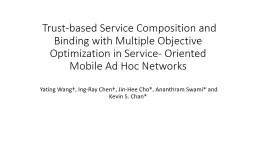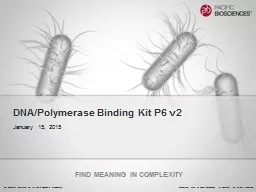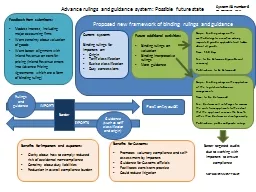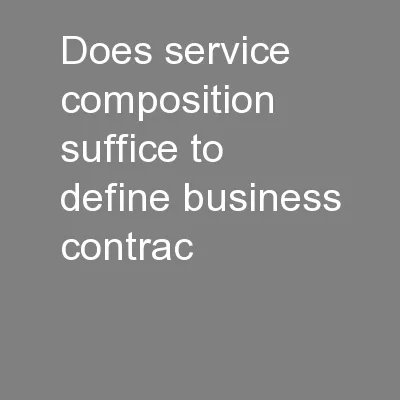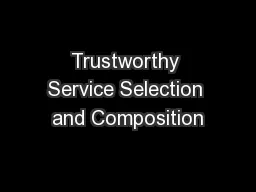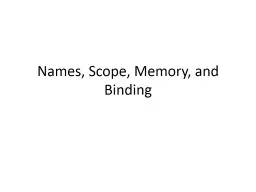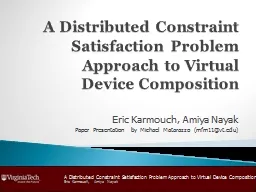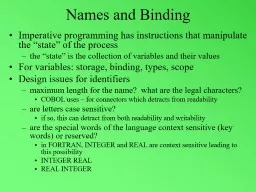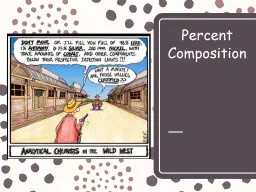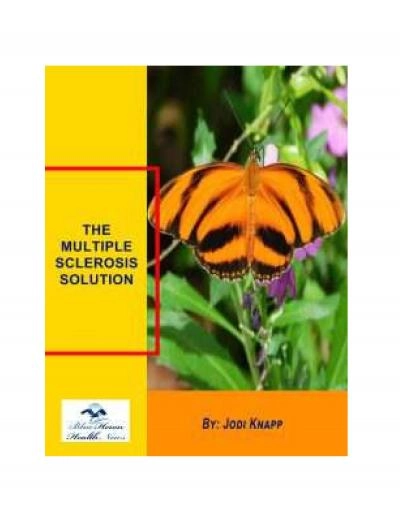PPT-Trust-based Service Composition and Binding with Multiple
Author : faustina-dinatale | Published Date : 2017-05-20
Yating Wang Ing Ray Chen JinHee Cho Ananthram Swami and Kevin S Chan Introduction Serviceoriented mobile ad hoc network MANET is populated with service providers
Presentation Embed Code
Download Presentation
Download Presentation The PPT/PDF document "Trust-based Service Composition and Bind..." is the property of its rightful owner. Permission is granted to download and print the materials on this website for personal, non-commercial use only, and to display it on your personal computer provided you do not modify the materials and that you retain all copyright notices contained in the materials. By downloading content from our website, you accept the terms of this agreement.
Trust-based Service Composition and Binding with Multiple: Transcript
Download Rules Of Document
"Trust-based Service Composition and Binding with Multiple"The content belongs to its owner. You may download and print it for personal use, without modification, and keep all copyright notices. By downloading, you agree to these terms.
Related Documents

